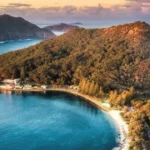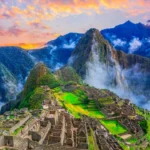The path that the majority of travelers and backcountry travelers usually travel when in South America is known as the “gringo trail.” I can think of Machu Picchu, the Salt Flat in Bolivia, and the Christ the Redeemer statue in Rio de Janeiro.
There are a ton of other amazing locations on this historically significant and naturally beautiful continent, even if those locations are undoubtedly worth seeing. These are some of my top off-the-beaten-path recommendations for destinations in South America.
1. Ischigualasto & Talampaya National Park, Argentina
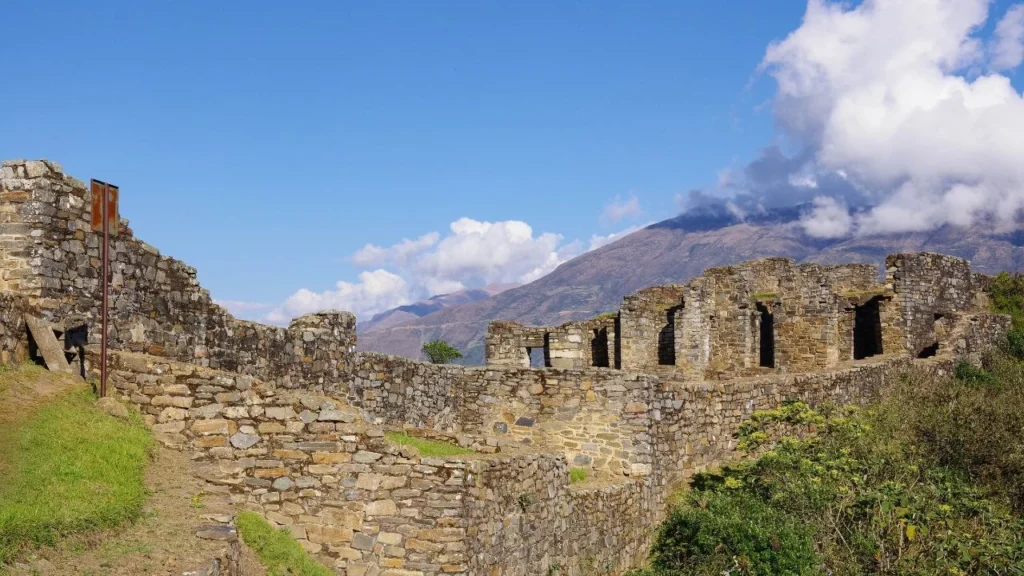
The Choquequirao complex and Machu Picchu are frequently contrasted because of their striking structural and architectural similarities, their roles as major Inca political, religious, and commercial hubs, and their ability to elude the Spanish conquistadors.
On the other hand, Choquequirao sees less than 50 people per day, in contrast to Machu Picchu. The site’s remote location is the cause of the problem.
You have to hike for two days over and down a canyon, then climb back up the other side to reach Choquequirao. The trip is uninteresting, very steep, and hot during the day and chilly at night, but it is more than made up for with the breathtaking views of the rivers and canyon.
2. Gocta Falls, Peru
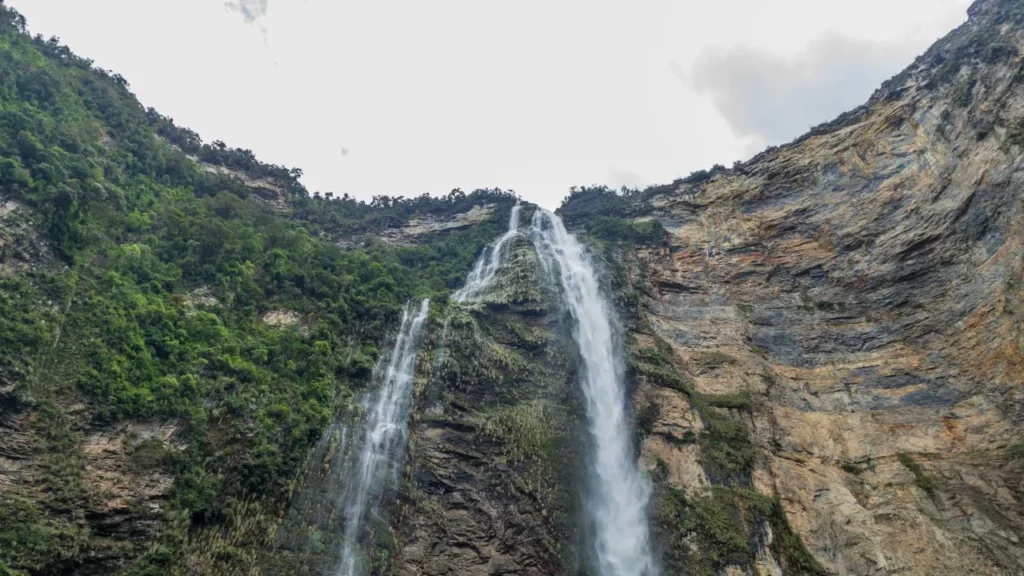
Gocta Falls, located in the north of Peru, is a spectacular waterfall despite not being as well-known as the Iguazu or Angel Falls. It is among the world’s tallest waterfalls, rising to a height of 771 meters.
You must travel through a deep rainforest for two hours to get to the base of the falls from the little hamlet of Cocachimba. Before you see the falls, you will hear them.
Because of the Chachapoyas region’s altitude, clouds periodically obscure the top of the falls, giving them a mystical appearance, while the water at the bottom evaporates in an ethereal manner.
3. Marble Caves, Chile
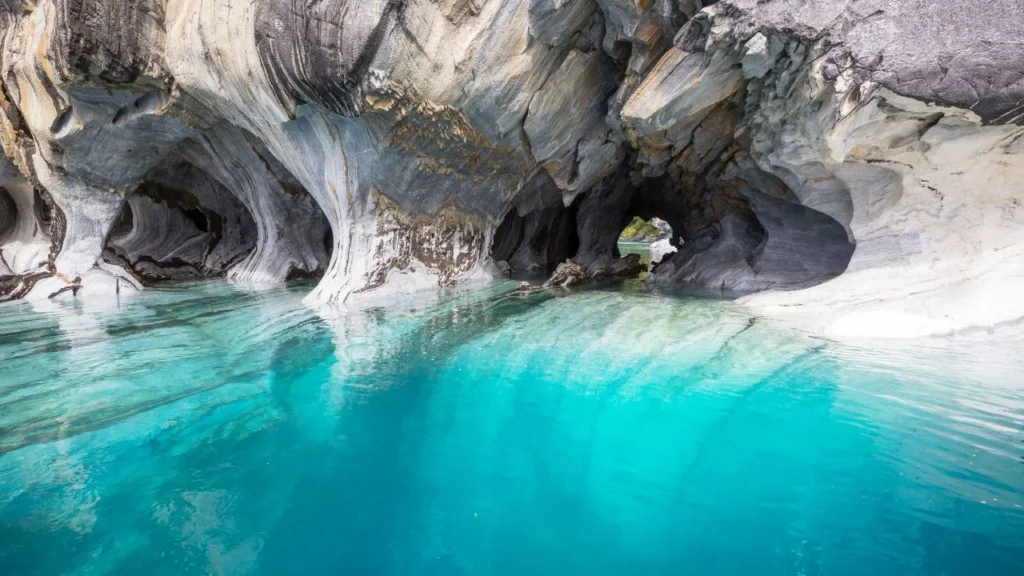
One location that is sure to make your pals jealous is the Marble Caves in Chile.
In the natural marble column, thousands of years of weathering and glacier water runoff created beautiful, undulating curves. The marbles take on an incredible cerulean blue hue when the sparkling water reflects light upon them at the appropriate season.
Three buildings are typically accessible via boat tour: the Marble Cathedral, the Marble Caves, and the Marble Chapels. Although the Chapel receives the most photos, the area is more frequently referred to as the Marble Caves.
The nearest village to stay is Puerto Rio Tranquilo, which is located in Chile along the Carretera Austral.
4. Lamas Castle, Peru
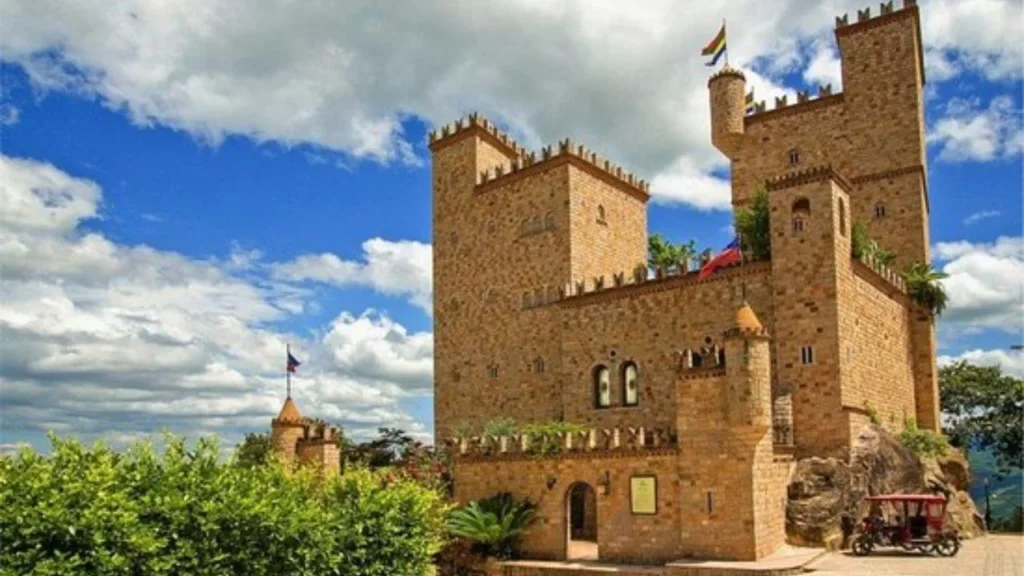
Tarapoto is located far north of the “gringo trail” in Peru. The settlement is surrounded by waterfalls and located in an area known as the Amazonian cloud forest. But the 35-minute drive to the small town of Lamas is what really caught our attention.
This vibrant little town is well-known for its medieval castle, which is completely out of place in the Amazon jungle and built in the European style. Rather than being a cheap imitation meant for kids, this five-story tall castle was finely detailed and painstakingly constructed.
The outer gardens and internal rooms are adorned with sculptures, carvings, and emblems that evoke a sense of being transported back in time to the Renaissance.
It’s interesting to note that the wealthy Italian industrialist who intended to construct the Castillo de Lamas
5. Samaipata, Bolivia
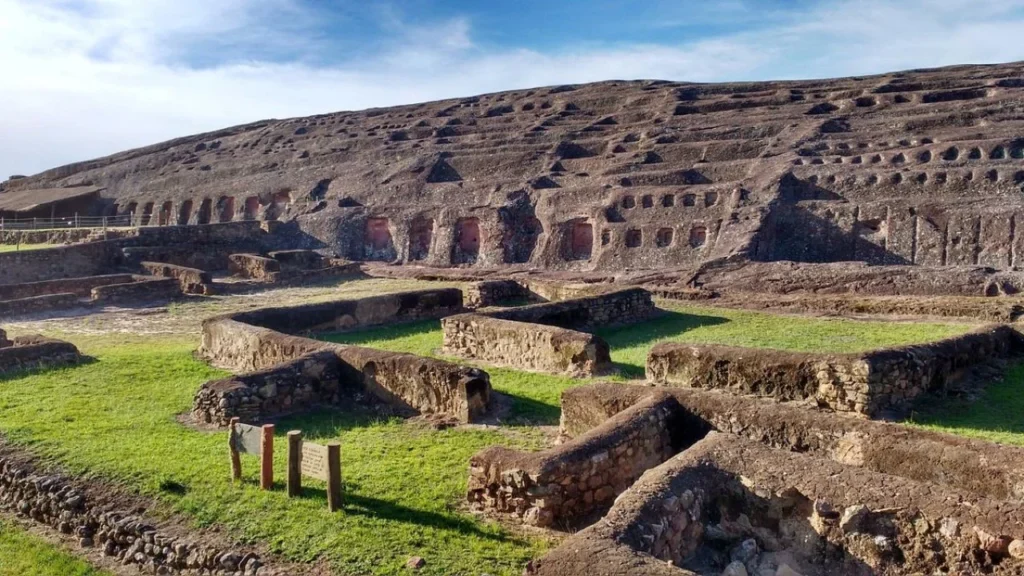
Nestled in the highlands, Samaipata is a peaceful hamlet in Eastern Bolivia surrounded by national parks, ruins, and waterfalls. “Rest in the Highlands” is what “Samaipata” means in Quechua. It’s the ideal location to get away from the hectic city life of Santa Cruz or La Paz.
Famous for its ruins, El Fuerte is located about 15 km outside of Samaipata town. Due to its historical significance, this huge monolith made of dark granite is listed as a UNESCO World Heritage site.
This archeological site functioned as a fort, a ceremonial center, and the capital of a province. It was influenced by three distinct civilizations.
6. Purmamarca, Argentina
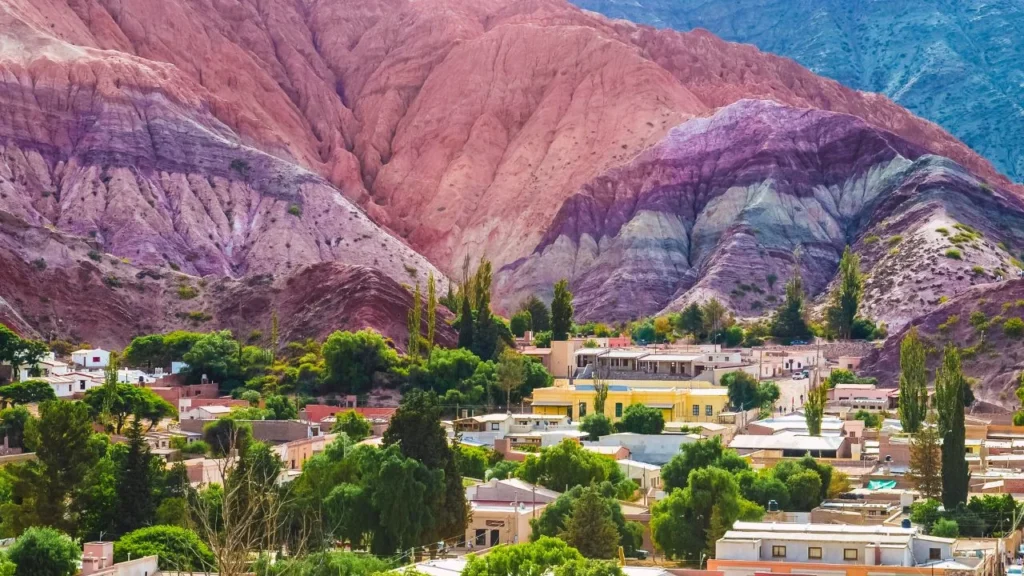
The Hill of Seven Colors, also known as Cerro de las Siete Colores, is the main attraction in Purmamarca, a town in northern Argentina.
According to legend, the local kids used to paint the once-dull hill at night while their parents slept. They painted one color each night, and after seven nights, their masterpiece was finished. In observance of the painting of the hill, the people of Purmamarca have an annual ceremony.
According to science, different kinds of limestones, mudstones, claystones, and other rocks developed the distinct colors during varied time periods. They eventually gave rise to the colors of the hill that we see today: ochre, yellow, orange, green, brown, lilac, and violet.
Tilcara and Purmamarca are located in Northern Argentina’s Jujuy region.
7. Pukara de Tilcara, Argentina

One of the many towns in the stunning valley of the UNESCO-designated Quebrada de Humahuaca in northern Argentina is the little mountain town of Tilcara.
The Pukara de Tilcara, the town’s focal point, is located 20 minutes outside of town atop a hill.
Since the Quechua word pukara means “fort,” it was believed that this archeological site was a stronghold. The Omaguaca tribe constructed the small stone square homes that comprised this fortified settlement somewhere between the first millennium A.D. and the 16th century, according to later research.
The residences have different sizes and layouts, creating the illusion of socioeconomic rank in action, and are surrounded by large cactus. In addition to homes, there were a few cemeteries and a church.
8. Cocora Valley, Colombia
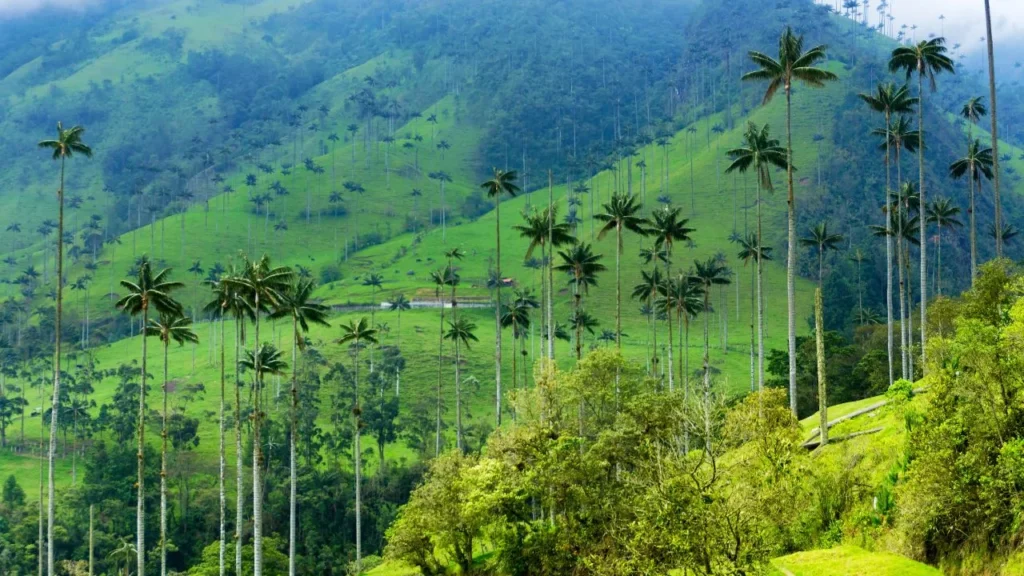
In Colombia’s Quindío district, there is a picturesque trek called Cocora Valley. The tallest trees in the world, the wax palm trees, are found in this valley. They are also the national tree of Colombia.
These palm trees resemble something out of a Dr. Seuss novel, reaching heights of up to 60 meters, and having a few palm leaves on top!
The quickest route from Salento to Cocora Valley is a 30-minute journey in a willy, or local jeep. There are two options available at the park entrance: a 30-minute easy hike that leads directly to the palm trees, or a 5-hour circle that winds through the valley, into the cloud forest, crosses rivers, and climbs and descends hills before arriving at the Palm Trees.

